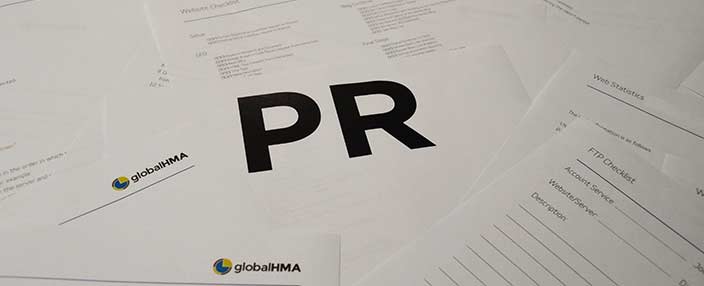It’s hard to create a voice for your client, but it can be even harder for a client to find a voice that listens when it comes to PR. Public relations has been a long-time practice of building publicity and press coverage. As a marketing agency that is expanding our public relation efforts, we strive to set the stage for engagement and build respective relationships with our clients–what PR is known for today. Unfortunately, we can’t always avoid the pitfalls that come our way.
In order to better prepare your media strategy, here are 10 PR mistakes that you should avoid:
1. Stories aren’t targeting the right people (demographics)
It’s important to identity your audience before you target individuals with your stories. One way to accomplish this is to research the proper demographics that your story relates to. Keep in mind that age, education, and occupation all play a role in who reads your story. If the story is central to a specific location, be sure to target those areas that your story is affiliated with. Although it may seem like a good idea to target publications that have a large readership, if your targeted audience isn’t one of their subscribers, then they most likely won’t be subscribing to yours–many forget this.
2. Over publishing of content
David Meerman Scott, an expert marketing and sales strategist, states in his blog post, The Health Club That Tells Its Story By Exercising An Attitude, “A great story builds business.” It’s not about the number of stories you publish or content you put out there, its about the quality of content. Creating a solid and genuinely strong story will entice the audience. Continually throwing content out there just to help build awareness can have its drawbacks, particularly putting content out there that isn’t very well written. Your audience may lose interest, and you run the risk of losing any new prospects.
3. The structure of the story is weak (faulty)
The first thing your audience will see when they read your story is the headline. You should ask yourself, is your title riveting enough that your audience will want to read it? Second, you must have a consistent theme throughout the body. With any story, it’s important to stay within the scope of the topic you are writing about. Veering away from the central focus will cause the reader to become confused or lose interest. A tip to stay on track would be to create a bullet point for each paragraph that identifies what you are going to talk about. Don’t forget to ask yourself: Who, What, When, Where and Why.
4. Images are not being used or lack there of
Using an image strategy to increase eye appeal for your story is far from new. Eye appeal is key and visuals are a great way to accomplish just that. David makes reference to past PR strategies that helped market the “Apollo spacecraft” in his blog post, Not So New: Apps And Infographics From 45 Years Ago. Many of the contractors who were helping to build Apollo created visual aesthetics that were written in such a way that the general public would be able to understand. This is very similar to the infographics that are created today to easily inform non-professionals outside of the field.
5. Overly promoting products or services
Although many press releases are used to generate awareness in hope to increase a following, it’s important that you don’t try to sell everything your client has to offer. Many readers and subscribers within your market want to be enticed by new innovations, but they won’t be so forthcoming if your just trying to target their wallets. Devote special times during the year for strategically engaging your audience with your client’s services or products. It shouldn’t be a race to make every product your client has known to the world through PR.
6. The author doesn’t understand the industry
The market is ever-changing and the demand to keep up with it can sometimes be difficult. One way to stay on top of the latest news and trends is to closely monitor your competitors. This may seem a bit unnerving, but it’s crucial in today’s market. It’s not enough to know what’s going on with your client, but rather all major players within the industry. Having more information than you need is better than not having enough.
7. Not expressing being a thought leader
It’s not realistic to simply state that you are a thought leader, but proving that you have the right expertise and credibility shows that you have what it takes to be the ultimate influencer. Proving that you are an expert in the field is just another reason for your audience to turn their attention to you.
8. Not listening to your client
Don’t tune out your client just because you think you have the same amount of knowledge as they do. It’s more beneficial to work with your client and receive their perspective or take on the matter at hand. Having the right amount of background information is important before you begin to create your story. Otherwise, it can leave a lot of questions unanswered or contribute to holes in the story.
9. Poor research
One of the biggest mistakes in public relations is poor research. If you are going to sell your story, you need to have the right facts and information to make your story credible. It’s essential that research be done well in advance, as the author is often on a time table when it comes to presenting the story to the public.
10. Focusing too much on SEO and not the content
Although this may win you brownie points with Google, your audience isn’t going to care what your meta-tags or alt descriptions say. Of course it is important to use proper keywords so that individuals searching can find your page, but don’t spend too much time on this. The content within the story is the driving factor that can greatly influence you or your client’s business.


